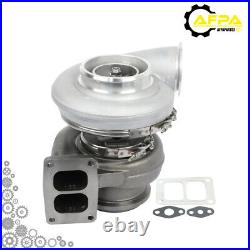

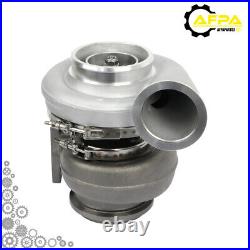
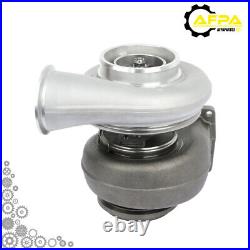
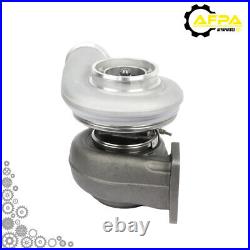
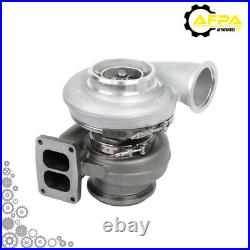
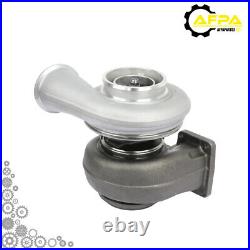
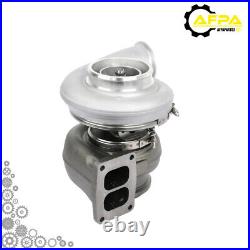
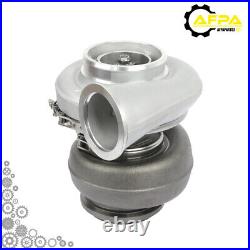
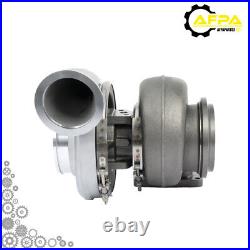

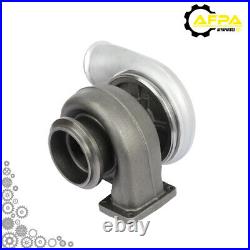

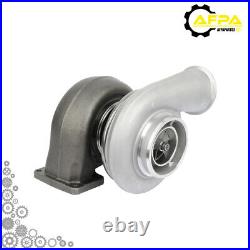
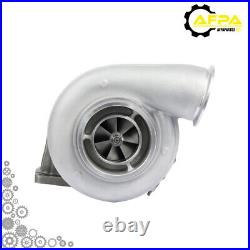
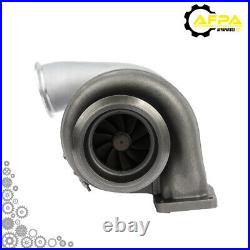
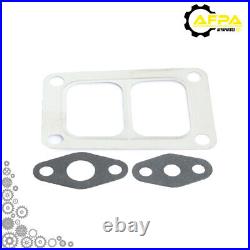

How to Install a Turbocharger: A Step-by-Step Guide. Step 1: Gather Your Tools and Materials. Before diving into the installation process, ensure you have all the necessary tools and materials at hand. This may include a variety of wrenches and screwdrivers for different fittings, a torque wrench calibrated to your vehicle’s specifications, high-quality gaskets to ensure a proper seal, and, of course, the turbocharger kit itself. Having everything prepared beforehand will streamline the installation process. Step 2: Disconnect the Battery. Turbocharger for Detroit Diesel Series 60 12.7L for BorgWarner S400 1.32 A/R. Begin by disconnecting the vehicle’s battery to prevent any electrical mishaps during the installation process. This step is crucial to ensure your safety and the safety of the vehicle’s electrical system. Step 3: Remove the Old Turbocharger. If you’re replacing an existing turbocharger, carefully remove it, taking note of the connections and fasteners. This step may involve accessing the turbocharger through the exhaust manifold. Be patient and methodical during removal, and inspect the old turbocharger for any signs of wear or damage. This information can be valuable for understanding your vehicle’s performance history. Step 4: Install the Turbocharger. Place the new turbocharger into position, securing it with the provided gaskets and fasteners. Ensure a proper seal to prevent any leaks in the future. This step is critical for the long-term performance and reliability of the turbocharger. Step 5: Connect the Exhaust and Intake Systems. Connect the turbocharger to the exhaust manifold and intake system. Tighten the connections with the appropriate torque to prevent any air or exhaust leaks. Pay attention to the alignment of these components, as proper fitting is essential for optimal turbocharger function. Consider using high-quality clamps to ensure a secure connection. Step 6: Install the Oil Supply Lines. Turbochargers require a steady supply of oil for lubrication. Use the recommended type of oil for your specific turbocharger, and verify that the lines are free from kinks or bends that could impede oil flow. Step 7: Connect the Intercooler. If your vehicle is equipped with an intercooler, connect it to the turbocharger. This step helps cool the compressed air before it enters the engine, improving overall efficiency. Ensure that the intercooler is clean and free from debris, and check for any signs of damage. Proper intercooler installation contributes to enhanced engine performance. Step 8: Double-Check All Connections. Before firing up the engine, double-check all connections and fasteners. Ensure everything is tightly secured to prevent any issues during operation. Take a systematic approach, going through each connection point and visually inspecting for any abnormalities. This meticulous check ensures a reliable and safe installation. Step 9: Reconnect the Battery. Now that the turbocharger is securely in place, reconnect the vehicle’s battery to restore power. Step 10: Test and Tune. Start the engine and monitor the turbocharger for any unusual sounds or signs of malfunction. If everything checks out, you can proceed with tuning the turbocharger to optimize performance. Consider consulting with a professional tuner or referring to the turbocharger kit’s instructions for guidance on adjusting settings. Regularly monitor your vehicle’s performance to ensure the turbocharger continues to operate at its best. What is a turbocharger and how does it work? A turbocharger is a device that forces more air into an internal combustion engine, allowing it to burn more fuel and generate more power. It consists of a pair of fans – a turbine and a compressor – connected by a shaft. The exhaust gases spin the turbine, which, in turn, drives the compressor, increasing the air pressure before it enters the engine. Why would I want to install a turbocharger on my vehicle? Installing a turbocharger can significantly boost your vehicle’s performance by increasing horsepower and torque. This results in improved acceleration and overall engine efficiency. Turbochargers are a popular choice for those seeking enhanced driving experiences and increased power without necessarily upgrading to a larger engine. Are there different types of turbochargers available? Yes, there are various types of turbochargers, including single-scroll and twin-scroll designs. Single-scroll turbochargers have one inlet and one outlet for exhaust gases, while twin-scroll turbochargers have two separate inlets, often improving efficiency at lower engine speeds. The choice depends on your vehicle’s specifications and your performance goals. Can I install a turbocharger on any vehicle? While turbochargers can be installed on many vehicles, it’s essential to consider factors like engine compatibility, available space, and the vehicle’s overall design. Some cars come from the factory with turbocharged engines, making the upgrade more straightforward. Consult with professionals, like Autonic Turbo Diesel, to determine the feasibility and compatibility for your specific vehicle. What maintenance is required for a turbocharged engine? Turbocharged engines generally require regular maintenance to ensure optimal performance. This includes changing the oil at recommended intervals, inspecting and replacing air filters, and checking for any leaks in the turbocharger system. Additionally, it’s crucial to allow the engine to cool down after intense driving to prevent damage to the turbocharger components. 23518588,2585838,23523197,23515635,23515636,23516431,2585837C91. 14030407-101,14030407-102,14030407-103,14030407-104. 14030407-105,14030407-106,14030407-107,14030407-108. OE Spec or Performance/Custom. 12.7L, 12700 ccm. We cannot change any address after checkout has been completed. Please make sure you submit your correct address! Except weekend and other irresistible factors. Any returning or exchanging item must be in new condition and cannot be tempered. We will offer help to resolve your problems as fast as possible. Transfer Case Shift Motor. Engine Coolant Thermostat for Dodge Charger Chrysler 300 5.7L 6.1L 6.4L. Thermostat Housing for Jeep Cherokee Chrysler 200 Dodge Dart Fiat 500x 2.4L. Fits 2005 2006 2007 Nissan Frontier Front LH Driver Side Master Window Switch. Fits Chevrolet C10 C20 C30 K10 K20 K30 P10 P20 5.7L Harmonic Balancer 594-006.

